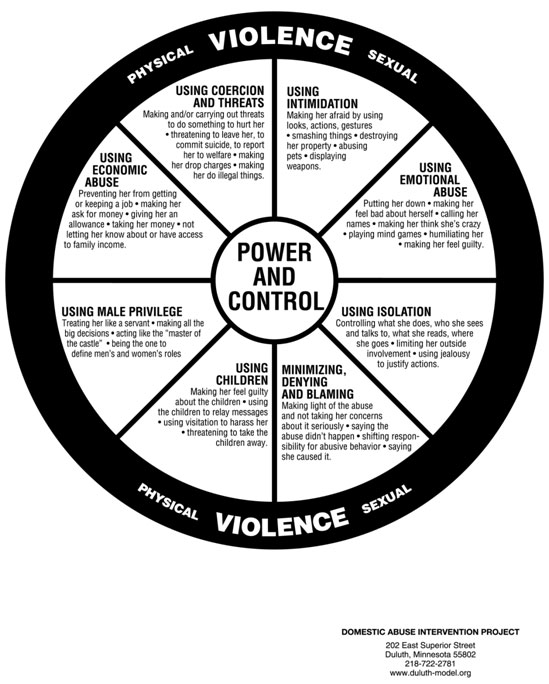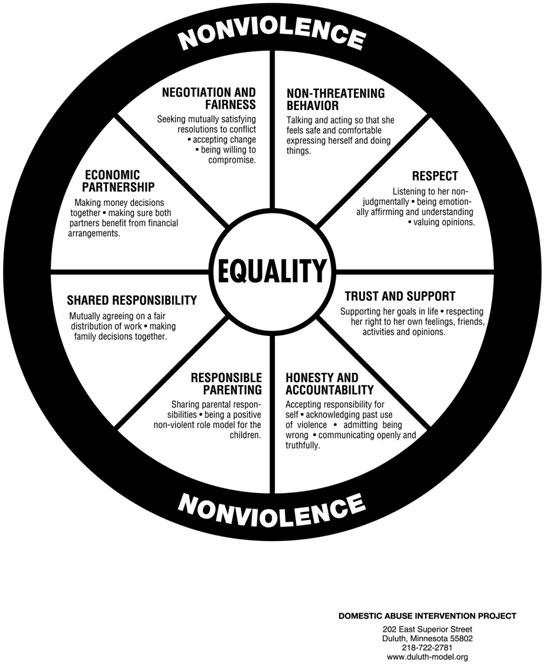|
According to the National Coalition Against Domestic Violence (NCADV, nd c),
“Battering is a pattern of behavior used to establish power and control over another person with whom an intimate relationship is or has been shared through fear and intimidation, often including the threat or use of violence. Battering happens when one person believes that they are entitled to control another.”
A significant component of dynamics of IPV/DV
is the power and control the perpetrator has over the victim.
The Power and Control wheel was developed by the Duluth Violence
Prevention Program. It came from the work of battered women
in Duluth, Iowa who had been abused by their male partners
and were attending women's education groups sponsored by the
women's shelter. The Wheel used in the curriculum is for men
who have used violence against their female partners. The
Duluth Project recognizes that there are women who use violence
against men, and that there are men and women in same-sex
relationships who use violence, this wheel is meant specifically
to illustrate men's abusive behaviors toward women.
IPV/DV relationships are highly unequal relationships.
The Power and Control Wheel identifies how the perpetrator
utilizes a number of strategies to gain and maintain power
and control over the victim. The perpetrator uses power and
control to problem solve, make decisions and exert his own
will on the victim.

Used by permission from the
Duluth Domestic Abuse Intervention Project.
Some men feel remorse and guilt after an episode of violent
behavior and become loving and caring. This behavior can give
the woman hope and allows her to stay in the relationship
until the next episode. This perpetuates the cycle (Saddock
& Saddock, 2004).
Treatment in IPV/DV relationships aims to equalize the power
in the relationship and stop the violence against victims.

Used by permission from the
Duluth Domestic Abuse Intervention Project.
Continue on to
|